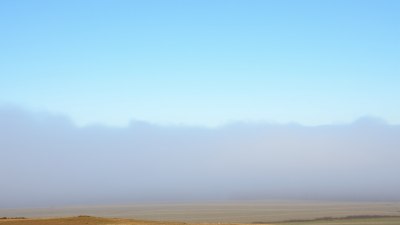The Subtle Science Behind Feeling Safe on Cloudy Days
Explore the psychological and environmental factors that make people feel safe and secure on cloudy days.

Cloudy days have a unique way of influencing human emotions, often evoking a surprising sense of safety and comfort. While sunshine is typically associated with positivity and energy, many find themselves drawn to the softer, muted ambiance created by overcast skies. This article delves into the subtle science behind why people might feel safer on cloudy days, exploring psychological, environmental, and cultural factors that contribute to this phenomenon.
Atmospheric Conditions and Human Perception
The atmosphere on a cloudy day provides a different sensory experience compared to clear sunny weather. The diffused light caused by cloud cover reduces harsh shadows and glare, creating a more uniformly lit environment. This uniformity can reduce sensory overload and make spaces feel less threatening or unpredictable. Moreover, the cooler temperatures and absence of direct sun may foster a calmness that enhances feelings of safety.
Studies in environmental psychology suggest that humans respond strongly to their immediate surroundings. Environments with softer lighting and stable, non-threatening visuals tend to promote relaxation. On cloudy days, the sky appears consistent with no sudden changes in brightness, which can help soothe anxious or alert states in the brain.
Evolutionary Perspectives on Weather and Safety
From an evolutionary standpoint, ancestral humans adapted to various weather conditions in ways that optimized survival. Bright sunlight often indicated activity periods fraught with potential risks such as predators or rival groups. Cloud cover might have signaled times of rest or lower external threat levels.
Moreover, cloudy weather can be associated with lower visibility; while this may appear to increase vulnerability, it also conceals individuals or groups, providing a degree of protection from distant hazards. This concealment might translate psychologically into a sense of refuge or safety for some people.
Psychological Mechanisms and Mood Regulation
Cloudy days may invoke introspection and withdrawal from high-energy social settings, fostering a controlled and meditative mental state. This internal focus can create a safe psychological space, where external dangers seem attenuated by reduced stimulation.
The lower levels of light on a cloudy day also affect neurotransmitter production, including serotonin and melatonin, which regulate mood and sleep cycles. For some, these shifts produce a calming effect that contributes to a feeling of security and well-being.
Cultural and Social Associations with Cloudy Weather
Cultural narratives and social conditioning heavily influence how we perceive various weather conditions. In many cultures, cloudy or rainy days are depicted as times for rest, reflection, and home-centered activities. These associations reinforce the idea of safety, warmth, and protection from the external world.
Additionally, literature and media often portray cloudy days as moments of solace or transition, aligning with the human experience of needing respite. Such cultural frameworks shape how individuals emotionally interpret overcast skies, potentially enhancing feelings of safety.
The Role of Sensory Input and Reduced Visual Complexity
Visual complexity, such as contrasting bright light and deep shadows, can heighten alertness due to the brain’s natural vigilance for threats. Cloudy days minimize this visual complexity, which can reduce cognitive load and anxiety.
Moreover, the muted palette of grey and blue tones on cloudy days may help to dampen sensory input, creating an environment that the brain categorizes as less stimulating and more stable. This stability contributes to a sense of safety and containment.
Impact of Cloud Cover on Social Behavior and Environmental Interaction
On cloudy days, people often engage in different social behaviors, such as staying closer to familiar environments or gathering indoors. These behavioral adjustments reinforce feelings of safety through proximity to known spaces and trusted individuals.
Furthermore, the noise levels on cloudy days can be lower due to reduced wind and activity outdoors. This diminished auditory stimulation enhances the overall sensation of calmness and safety.
Scientific Studies on Weather, Safety, and Emotional Response
Empirical research has examined correlations between weather patterns and emotional states. Some studies indicate that gloomy weather increases anxiety for certain populations, yet others show a preference for lower light conditions due to the soothing effect on sensory processing.
Neuroscientific research has measured brain activity changes in response to varying light levels. Findings demonstrate that diffuse light decreases activation in stress-related brain regions, thereby promoting relaxation and security sensations.
Physical Safety Factors Tied to Weather Conditions
Beyond psychological effects, weather influences physical safety, such as reduced ultraviolet radiation exposure on cloudy days. This factor subconsciously signals a lower risk environment, which may translate into feeling safer.
Cloud cover also moderates temperature extremes, preventing overheating and dehydration risks. Such moderation in bodily comfort can support a collective sensation of safety and well-being.
Personal Stories and Anecdotal Evidence
Many individuals report preferring cloudy days for outdoor activities like walking or reading, citing feelings of coziness and protection against the harshness of sun or heat. Anecdotal accounts reinforce scientific findings by highlighting personal experiences of lowered stress and increased comfort under overcast skies.
Such narratives emphasize that the subjective experience of safety is multidimensional, encompassing physiological comfort, emotional well-being, and environmental stability, all potentially enhanced by cloudy conditions.
How to Leverage Cloudy Days for Mental Health Benefits
Understanding the calming effects of cloudy days allows individuals to intentionally use these conditions for mental health support. Activities like mindful walking, meditation, or creative work can be especially restorative during overcast weather.
Creating indoor spaces that mimic the soft, diffused lighting of cloudy days can also promote relaxation and perceived safety regardless of actual weather conditions.
Emerging Technologies and Future Research Directions
Advancements in lighting technology seek to replicate natural atmospheric light variations to harness the benefits of cloudy day lighting indoors. Such innovations open new possibilities for environments tailored to enhance safety perception and reduce stress.
Future research may explore individual differences in reactions to weather, aiming to optimize personalization of environmental conditions for emotional and physical safety.
A Nuanced Appreciation of Nature’s Influence
The subtle science of feeling safe on cloudy days highlights our profound connection to the environment. Appreciating how weather affects mood and perception deepens our understanding of human experience and wellbeing.
By recognizing the complex interplay of evolutionary, psychological, and cultural factors, we can better navigate and appreciate the quiet comfort that cloudy days frequently provide.
The next time clouds gather, consider embracing the softer light and tranquility as a natural shield that gently enhances the sense of safety within and around you.











